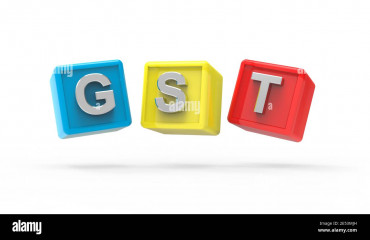
The April data is for transactions that took place in March, and thus benefits from high year-end economic activity and compliance-related measures. A better metric is year-on-year growth, which doesn't paint a rosy picture.
The April data is for transactions that took place in March, and thus benefits from high year-end economic activity and compliance-related measures. A better metric is year-on-year growth, which doesn't paint a rosy picture
Goods and services tax (GST) collections hit a record ₹1.87 trillion in April. Ever since its introduction, GST data has become a barometer of how well the economy is performing. But is the April data really so straightforward? Mint explains:
What did the latest GST data show?
Every month, the finance ministry releases the monthly goods and services collection data, which is an indicator of economic activity in the country. On 1 May, the finance ministry said GST collections in April were ₹1.87 trillion, the highest since the implementation of the indirect tax regime in 2017. Soon after the release of the data, Prime Minister Narendra Modi in a tweet lauded the collections, saying that it was "great news for the Indian economy". Of the total amount, Central GST was ₹38,440 crore, State GST ₹47,412 crore, integrated GST ₹89,158 crore and cess ₹12,025 crore.
How to read the record figures?
The April data is for transactions that took place in March, which usually benefit from high year-end economic activity and compliance-related measures. But this spike tends to be short-lived, and collections in the rest of the year tend to be sharply lower. In FY23, after hitting ₹1.68 trillion in April, the GST mop-up remained in the ₹1.4-1.5 trillion range, and was ₹1.6 trillion in March 2023. A better metric is year-on-year growth, and that doesn't paint a rosy picture. At 11.6%, collections growth in April hit a 5-month low. This was also only a tad higher than the 10.5% nominal GDP growth projected by the government for FY24.

View Full Image
How have collections grown in the last two years?
They have been robust, rising as much as 30% in FY22 and 22% in FY23. But much of the rise was due to high inflation and a low base effect, given the drop during the pandemic. Nevertheless, the rise in collections outpaced nominal GDP growth. But this momentum is slowing down, and growth may even drop to single digits, economists said.
Will inflation impact GST collections?
GST collections are measured at current prices, which include the impact of inflation. The high growth rate in the past two years was attributed to high inflation, with retail prices rising 5.5% in FY22 and 6.8% in FY23 and wholesale prices rising 13% and 9.4%, respectively. However, in the current financial year, inflation is expected to slow down at the retail level and come off sharply at the wholesale level. This, in turn, could slow the momentum of GST collections, along with a slowdown in the overall economy.
What does this mean for the economy?
Higher mop-up, in theory, without any tax rejig, means higher consumption of goods and services. However, inflation and base effects have muddled a clear trend in the past three years even as collections have outpaced nominal GDP growth. With GST collections forming 28% of the Centre's tax kitty (higher than corporate and income tax), its healthy growth is crucial. But many view GST as an undue burden on the poor, which could, in turn, impede consumption growth at lower income levels.
